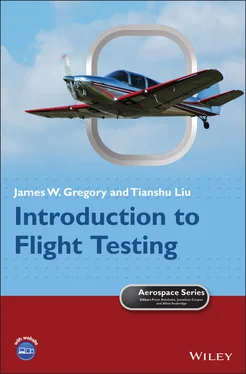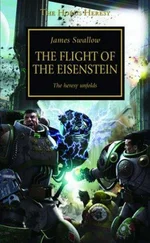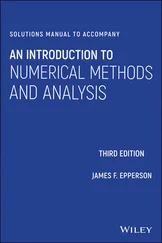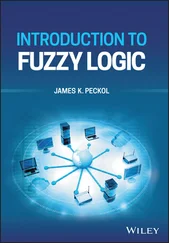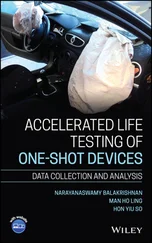James W. Gregory - Introduction to Flight Testing
Здесь есть возможность читать онлайн «James W. Gregory - Introduction to Flight Testing» — ознакомительный отрывок электронной книги совершенно бесплатно, а после прочтения отрывка купить полную версию. В некоторых случаях можно слушать аудио, скачать через торрент в формате fb2 и присутствует краткое содержание. Жанр: unrecognised, на английском языке. Описание произведения, (предисловие) а так же отзывы посетителей доступны на портале библиотеки ЛибКат.
- Название:Introduction to Flight Testing
- Автор:
- Жанр:
- Год:неизвестен
- ISBN:нет данных
- Рейтинг книги:3 / 5. Голосов: 1
-
Избранное:Добавить в избранное
- Отзывы:
-
Ваша оценка:
- 60
- 1
- 2
- 3
- 4
- 5
Introduction to Flight Testing: краткое содержание, описание и аннотация
Предлагаем к чтению аннотацию, описание, краткое содержание или предисловие (зависит от того, что написал сам автор книги «Introduction to Flight Testing»). Если вы не нашли необходимую информацию о книге — напишите в комментариях, мы постараемся отыскать её.
Introduction to Flight Testing
Key features:
Provides an introduction to the basic flight testing methods and instrumentation employed on general aviation aircraft and unmanned aerial vehicles.
Includes examples of flight testing on general aviation aircraft such as Cirrus, Diamond, and Cessna aircraft, along with unmanned aircraft vehicles.
Suitable for courses on Aircraft Flight Test Engineering. Provides an introduction to the basic flight testing methods employed on general aviation aircraft and unmanned aerial vehicles
Introduction to Flight Testing
Introduction to Flight Testing
Introduction to Flight Testing — читать онлайн ознакомительный отрывок
Ниже представлен текст книги, разбитый по страницам. Система сохранения места последней прочитанной страницы, позволяет с удобством читать онлайн бесплатно книгу «Introduction to Flight Testing», без необходимости каждый раз заново искать на чём Вы остановились. Поставьте закладку, и сможете в любой момент перейти на страницу, на которой закончили чтение.
Интервал:
Закладка:
6 Barlow, J., B., Rae, W. H., and Pope, A., 1999, Low‐Speed Wind Tunnel Testing, 3, New York: Wiley.
7 Corda, S. (2017). Introduction to Aerospace Engineering with a Flight Test Perspective. Chichester, West Sussex, UK: Wiley.
8 Cummings, R.M., Mason, W.H., Morton, S.A., and McDaniel, D.R. (2015). Applied Computational Aerodynamics. Cambridge, UK: Cambridge University Press.
9 Federal Aviation Administration (2003). Small Airplane Certification Compliance Program, Advisory Circular 23‐15A. Washington, DC: U.S. Department of Transportation.
10 Federal Aviation Administration (2011). Flight Test Guide for Certification of Part 23 Airplanes, Advisory Circular 23‐8C. Washington, DC: U.S. Department of Transportation.
11 Fisher, D.F., Del Frate, J.H., and Richwine, D.M. (1990). In‐flight flow visualization characteristics of the NASA F‐18 high alpha research vehicle at high angles of attack. NASA Technical Memorandum 4193 http://hdl.handle.net/2060/19910010742.
12 Gallagher, G.L., Higgins, L.B., Khinoo, L.A., and Pierce, P.W. (1992). Fixed Wing Performance. USNTPS‐FTM‐No. 108,. Patuxent River, MD: Naval Air Warfare Center.
13 Gorn, M.H. (2001). Expanding the Envelope: Flight Research at NACA and NASA. Lexington, KY: University Press of Kentucky.
14 Hallion, R.P. (1972). Supersonic Flight; The Story of the Bell X‐1 and Douglas D‐558. New York: Macmillan.
15 Hallion, R.P. and Gorn, M.H. (2003). On the Frontier: Experimental Flight at NASA Dryden. Washington, DC: Smithsonian Books.
16 Hamlin, B. (1946). Flight Testing Conventional and Jet‐Propelled Airplanes. New York: Macmillan Company.
17 Herrington, R. M., Shoemacher, P. E., Bartlett, E. P., and Dunlap, E. W. (1966). Flight Test Engineering Handbook, USAF Technical Report 6273, Edwards AFB, CA: US Air Force Flight Test Center. Defense Technical Information Center Accession Number AD0636392, https://apps.dtic.mil/docs/citations/AD0636392.
18 Jategaonkar, R.V. (2015). Chapter 2. In: Flight Vehicle System Identification: A Time‐Domain Methodology, 2e. Reston, VA: American Institute of Aeronautics and Astronautics.
19 Jenkins, D. R., Landis, T., and Miller, J. (2003). American X‐Vehicles: An Inventory – X‐1 to X‐50. Monographs in Aerospace History No. 31, NASA SP‐2003‐4531.
20 Jumper, E.J., Gordeyev, S., Davalieri, D. et al. (2015). Airborne Aero‐Optics Laboratory – Transonic (AAOL‐T). AIAA 2015‐0657,. Kissimmee, FL: American Institute of Aeronautics and Astronautics, 53rd Aerospace Sciences Meeting.
21 Kimberlin, R.D. (2003). Flight Testing of Fixed‐Wing Aircraft. Reston, VA: American Institute of Aeronautics and Astronautics.
22 Klein, V. and Morelli, E.A. (2006). Chapter 9. In: Aircraft System Identification: Theory and Practice. Reston, VA: American Institute of Aeronautics and Astronautics.
23 Lachendro, N. (2000). Flight testing of pressure sensitive paint using a phase based laser scanning system. MS thesis, West Lafayette, IN: School of Aeronautics and Astronautics, Purdue University.
24 McCormick, B.W. (2011). Introduction to Flight Testing and Applied Aerodynamics. Reston, VA: American Institute of Aeronautics and Astronautics.
25 McCrink, M. H. and Gregory, J. W. (2021). Design and development of a high‐speed UAS for beyond visual line‐of‐sight operations. Journal of Intelligent & Robotic Systems 101: 31. https://doi.org/10.1007/s10846-020-01300-2.
26 Miller, J. (2001). The X‐planes – X‐1 to X‐45, 3e. Hinckley, UK: Midland Publishing.
27 Mondt, M.J. (2014). The Tao of Flight Test: Principles to Live By. Boone, IA: J. I. Lord.
28 Olson, W.M. (2003). Aircraft Performance Flight Testing, AFFTC‐TIH‐99‐01. Edwards AFB, CA: Air Force Flight Test Center.
29 Peebles, C. (2014). Probing the Sky: Selected NACA Research Airplanes and their Contributions to Flight. Washington, DC: National Aeronautics and Space Administration.
30 Reader, K. R. and Wilkerson, J. B. (1977). Circulation Control Applied to a High Speed Helicopter Rotor. Report 77‐0024, David W. Taylor Naval Ship Research and Development Center, Bethesda, MD: DTIC accession number ADA146674.
31 Smith, H.C. (1981). Introduction to Aircraft Flight Test Engineering. Basin, WY: Aviation Maintenance Publishers.
32 Stinton, D. (1998). Flying Qualities and Flight Testing of the Airplane. Reston, VA: American Institute of Aeronautics and Astronautics.
33 Stoliker, F.N. (1995). Introduction to Flight Test Engineering, AGARD Flight Test Techniques Series, AGARD‐AG‐300, vol. 14. Neuilly‐sur‐Seine, France: Advisory Group for Aerospace Research and Development.
34 Stoliker, F., Hoey, B., and Armstrong, J. (1996). Flight Testing at Edwards: Flight Test Engineers' Stories 1946–1975. Lancaster, CA: Flight Test Historical Foundation.
35 Tavoularis, S. (2005). Measurement in Fluid Mechanics. Cambridge, UK: Cambridge University Press.
36 Tischler, M.B. and Remple, R.K. (2012). Aircraft and Rotorcraft System Identification, 2e. Reston, VA: American Institute of Aeronautics and Astronautics.
37 U.S. Code of Federal Regulations. (2021). Airworthiness Standards: Normal Category Airplanes. Title 14, Chapter I, Subchapter C, Part 23 (14 CFR §23). http://www.ecfr.gov(accessed 01 January 2021).
38 U.S. Air Force Test Pilot School (1986). Performance Phase Textbook, vol. 1, USAF‐TPS‐CUR‐86‐01. Edwards AFB, CA: US Air Force Test Pilot School.
39 U.S. Naval Test Pilot School. (1977). Fixed Wing Performance: Theory and Flight Test Techniques. USNTPS‐FTM‐No. 104, Patuxent River, MD: Naval Air Test Center.
40 U.S. Naval Test Pilot School. (1997). Fixed Wing Stability and Control: Theory and Flight Test Techniques. USNTPS‐FTM‐No. 103, Patuxent River, MD: Naval Air Warfare Center.
41 Ward, D., Strganac, T., and Niewoehner, R. (2006). Introduction to Flight Test Engineering, 3e, vol. 1. Dubuque, IA: Kendall/Hunt.
42 Ward, D., Strganac, T., and Niewoehner, R. (2007). Introduction to Flight Test Engineering, vol. 2. Dubuque, IA: Kendall/Hunt.
43 Warwick, G. (2017). Ohio State pushes speed envelope in UAS Research. Aviation Week and Space Technology 18 (2017): 44.
44 Wolfe, T. (1979). The Right Stuff. New York: Farrar, Straus and Giroux.
45 Yeager, C. and Janos, L. (1985). Yeager: An Autobiography. Toronto: Bantam Books.
46 Young, J.O. (1997). Meeting the Challenge of Supersonic Flight. Edwards AFB, CA: Air Force Flight Test Center.
2
The Flight Environment: Standard Atmosphere
In this chapter, we will discuss the properties of the environment for flight testing – Earth's atmosphere. It is critical to understand the nature of the atmosphere, since aircraft performance depends significantly on the properties of air. For example, the lift produced by the aircraft is proportional to the air density, and the amount of power produced by an internal combustion engine also varies with density. For these two reasons, aircraft performance decreases as density decreases. We will see in this chapter that density decreases with altitude, so key aircraft performance metrics such as takeoff distance, rate of climb, acceleration, etc. all degrade with altitude. Since aircraft performance depends significantly on the local properties of air, we need some way to factor out altitude effects. We also need to be able to predict the performance of an aircraft as a function of altitude, once its baseline performance is known. Thus, we need an agreed‐upon standard definition of the properties of the atmosphere – this is the standard atmosphere. Definition of the standard atmosphere allows us to evaluate and compare aircraft performance in a consistent manner, no matter what the altitude is.
The important atmospheric parameters are the atmospheric temperature, pressure, density, and viscosity, which depend on the distance from the earth surface, geographic location, and time. In order to describe the atmosphere in a universal way, a standard atmosphere model has been developed, where the atmospheric parameters are determined as the univariate functions of altitude from sea level. Temperature exhibits strong variations with time of year, geographic location, and altitude. And, on a daily basis, temperature depends on current weather conditions in a stochastic manner. It is impossible to develop a first‐principles model that will capture all of these parameters that influence the temperature profile; thus, the standard temperature profile is determined from an average of a large ensemble of atmospheric measurements. The variation of pressure with altitude, however, is rigorously described by some basic physical principles – we will derive these here. In fact, pressure is so intricately and reliably linked to altitude that aircraft altimeters measure pressure and convert the measurement to an indicated altitude through the definition of the standard atmosphere. Density is related to the estimated value of temperature and the derived value of pressure via the ideal gas law. Finally, we will provide a relationship that determines the viscosity of air as a function of temperature. Based on these developments, we will define a standard atmosphere that can be expressed in tabular form, or equations coded for computational analysis. This chapter will start with a physical description of the atmosphere and then present a detailed development of the standard atmosphere. Most of the development of the standard atmosphere presented in this chapter will rely on SI units, since this was the unit system used to define the standard atmosphere and the boundaries of atmospheric regions. The input and output of the standard atmosphere can be easily converted from SI units to English units as needed.
Читать дальшеИнтервал:
Закладка:
Похожие книги на «Introduction to Flight Testing»
Представляем Вашему вниманию похожие книги на «Introduction to Flight Testing» списком для выбора. Мы отобрали схожую по названию и смыслу литературу в надежде предоставить читателям больше вариантов отыскать новые, интересные, ещё непрочитанные произведения.
Обсуждение, отзывы о книге «Introduction to Flight Testing» и просто собственные мнения читателей. Оставьте ваши комментарии, напишите, что Вы думаете о произведении, его смысле или главных героях. Укажите что конкретно понравилось, а что нет, и почему Вы так считаете.
